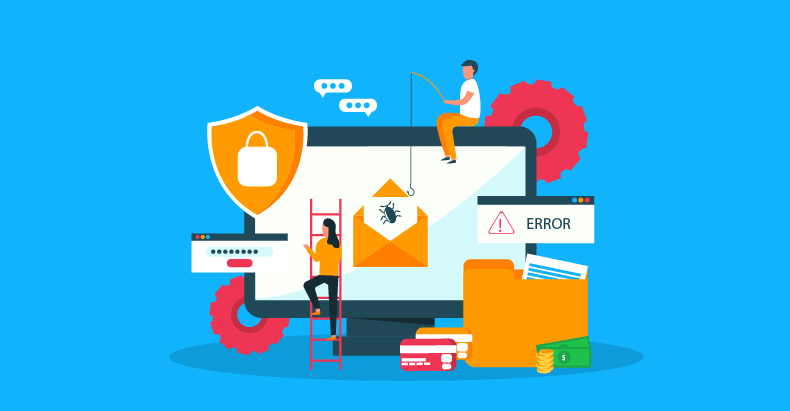How To Prepare for a SAMA CSF Audit?

- May 22, 2024
- admin
What is SAMA CSF?
As Saudi Arabia prepares to make Vision 2030 a reality, the financial sector is not one to be left behind. The Saudi Arabian Monetary Authority, or SAMA, oversees the growth of this critical sector for the Saudi economy.
Keeping in line with evolving technological trends, SAMA foresaw a need to protect the Kingdom’s rapidly digitalizing financial system. As online transactions, fintech usage, and sensitive financial data grew, it introduced the SAMA Cyber Security Framework (CSF) to ensure citizens could rely on the protection of their financial rights and information.
SAMA CSF is a guideline to help Saudi banks and financial institutions secure their information. It is mandatory for these organizations operating in Saudi Arabia to adhere to the SAMA CSF. Compliance is also a requirement for any financial or fintech organizations seeking to enter the lucrative Saudi market.
Achieving SAMA CSF Compliance
SAMA CSF implementation and compliance requires a series of steps leading up to an audit confirming the compliant status of the organization. We’ve broken down the steps below to make them easier to understand.
1. Understand and Align with SAMA CSF Requirements
Start by thoroughly studying & understanding SAMA CSF requirements. Evaluate your current security protocols and measures against SAMA’s strict standards. The more time you take to ensure you have gathered all relevant data to your organization’s current vulnerabilities, the smoother the rest of the implementation will go. Conduct a comprehensive review of all systems, processes, and data handling methods. This includes technical infrastructure such as firewalls, encryption protocols, and access controls. But auditors also investigate procedures for data protection, incident
response, and risk management. If your organization has previously conducted any external or internal audits, reviewing that documentation can give you an excellent head start.
2. Gap Analysis and Risk Assessment
Once you have a precise understanding of the current situation in your organization, compare it to the requirements outlined in the SAMA CSF. Highlight areas of non-compliance or weakness. This constitutes your gap analysis. Following this, you should also conduct a risk assessment to understand the potential impact of these vulnerabilities on your organization.
3. Develop an Implementation Plan
Once you’ve identified the risks & gaps in your organization’s cybersecurity, develop a robust strategy to address them. Set clear, achievable goals, outlining the resources required, and establishing timelines for compliance. Involve key stakeholders earlier in this process to improve organizational buy-in.
Based on the risk assessment, prioritize the gaps that need to be addressed. Allocate the necessary resources, including budget and personnel, for implementing the required cybersecurity measures based on the prioritization and strategy you have developed.
4. Implement Required Controls and Policies
Implement the necessary cybersecurity controls and measures to address the identified gaps. This may include technical controls, policies, and procedures. For most organizations, this step involves upgrading existing software, deploying new technologies, and making organization-wide changes to improve data security. Each change must be documented and validated against SAMA guidelines. Note that your organization may also need to invest significantly in technology and manpower to meet SAMA CSF standards.
5. Testing & Training
Once implementations and upgrades are in place, you can perform additional tests to verify that security systems are effective and can defend against potential cyberattacks. This might include penetration testing, vulnerability scans, and simulation of security breaches. Testing will identify weaknesses that may not have
been apparent before – or even weaknesses that might have been introduced by the changes.
Remember that your systems are only as good as your people. Educate employees about their critical roles in the newly implemented security protocols. Regular training & awareness sessions help reinforce the message about the importance of data privacy, and how to recognize potential cyber threats. Effective training also ensures that your workforce is knowledgeable and vigilant, reducing the likelihood of successful social engineering attacks that rely on successfully manipulating your employees.
6. Continuous Monitoring and Improvement
Establish a continuous monitoring system to oversee and ensure sustained compliance. This will also help you benchmark the effectiveness of the implemented security measures. Continuous monitoring typically involves regular audits, real-time monitoring of security logs, and periodic reviews of the cybersecurity framework.
7. Internal Audit
Before the external audit, conduct an internal audit to ensure that all CSF requirements are being met and to identify any areas for improvement. An internal audit acts as a dry run of the SAMA CSF audit and greatly improves your chances of successfully clearing your final audit. It also helps familiarize your team with the tools and processes auditors use – which is helpful, as auditors may also interview key team members as part of the audit process.
8. External Audit and Certification
SAMA CSF compliance validation requires an external party to confirm that an organization has been found to meet all the requirements of the framework. Work on any recommendations or findings from the external audit to achieve full compliance. SAMA permits authorized third-party auditors to perform these external audits. Once completed, these auditors will present their reports to SAMA who will then issue your organization’s certificate of compliance.
Receiving a SAMA certificate is not only a regulatory requirement but also signals to your stakeholders and customers that you value information security. It is a badge of trust and reliability, highlighting your organization’s commitment to protecting their data.
Remember, the goal of implementing and auditing against the SAMA CSF is not only to achieve compliance but also boost your organization’s cybersecurity resilience. Your cybersecurity strategy and practices must continue to evolve as threats do.
Why SAMA CSF Matters
Since its introduction, SAMA CSF has noticeably reduced the cybersecurity risk faced by Saudi Arabia’s financial sector. Organizations that comply with the framework have seen fewer security breaches, and their customers feel more confident about the safety of their transactions. In turn, this has further stabilized the country’s financial market.
Takeaways
The SAMA CSF is essential for maintaining the integrity and security of the financial sector in Saudi Arabia. Through compliance, organizations not only protect themselves but also build trust in the emerging fintech ecosystem. This contributes to the long-term stability and reliability of the financial system.
SAMA will continue to update its framework to address new cybersecurity challenges as they arise. As the prime authority overseeing the financial sector, its influence is undeniable. Financial institutions will need to stay informed about regulatory changes and adapt their security measures accordingly.
If your organization is seeking to adopt SAMA CSF compliance, Kualitatem can help. With over 15 years of multinational experience, our team of experts is skilled in implementing and ensuring your organization successfully achieves SAMA CSF certification.











